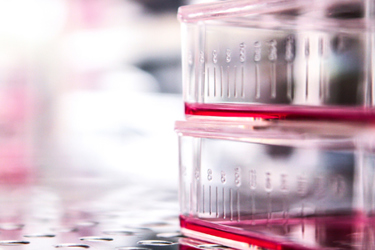Targeted CRISPR/Cas9 Screen Identifies Superior HEK293 Cell Lines For AAV9 Production
By Francis Grafton, Ryan Feitzinger, Kaylin Fisher, Lily Leveque-Eichhorn, Christopher A. Reid, and Mohammad A. Mandegar

There are two primary AAV production platforms: transient transfection of mammalian cells and baculovirus infection of Sf9 insect cells. While Sf9 cells often produce higher titers of rAAV, this comes at the expense of vector quality and potency for certain AAV serotypes. Few studies have focused on systematically engineering cell systems to improve both viral production and potency.
In this study, we developed a proprietary clonal suspension-adapted HEK293 cell line (AC001.230) through clonal isolation and high-throughput screening, resulting in improved productivity for 7 out of 10 AAV serotypes compared to 293F cells. Using a targeted CRISPR/Cas9 screen, we identified three classes of targets that significantly increased AAV9 production. From this work, we created two independent suspension-adapted knockout cell lines (AC003 and AC010) that exhibit a greater than two-fold improvement in AAV9 production.
This research suggests that combining single-cell cloning and genetic knockouts can enhance AAV9 production, with confirmation through capsid titer and vector genome quantification. Ongoing studies are exploring the production of vectors with varying lengths and multiple AAV serotypes using large-scale bioreactor systems. The insights from this work can be applied to customer cell lines or for cloning and engineering GMP-banked HEK293 suspension cells.
Get unlimited access to:
Enter your credentials below to log in. Not yet a member of Cell & Gene? Subscribe today.
